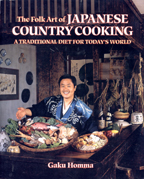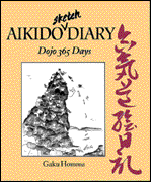The Structure of AIKIDO
The Structure of Aikido Part 1: Kenjutsu and Taijutsu (Sword and Open-hand Movement Relationships)  Published by North Atlantic Books, Berkeley, California; Domo Productions, Denver, Colorado; 1997 Paperback; 186 pages; $22.95 The Structure of Aikido Volume I: Kenjutsu and Taijutsu (Sword and Open-hand Movement Relationships) is a remarkable interpretation of the foundation of Aikido technique. Gaku Homma’s in-depth study of the relationship between Japanese swordsmanship and open-hand movement unites tradition with the contemporary development of the art of Aikido. Although the study of Kenjutsu and Aikido have long been associated, this is the first book in which actual Aikido techniques are related to technique sequences used with the sword. 1,600 frame-by-frame photos mirror the movement shared by both arts.
Published by North Atlantic Books, Berkeley, California; Domo Productions, Denver, Colorado; 1997 Paperback; 186 pages; $22.95 The Structure of Aikido Volume I: Kenjutsu and Taijutsu (Sword and Open-hand Movement Relationships) is a remarkable interpretation of the foundation of Aikido technique. Gaku Homma’s in-depth study of the relationship between Japanese swordsmanship and open-hand movement unites tradition with the contemporary development of the art of Aikido. Although the study of Kenjutsu and Aikido have long been associated, this is the first book in which actual Aikido techniques are related to technique sequences used with the sword. 1,600 frame-by-frame photos mirror the movement shared by both arts.
Aikido for Life
Aikido for Life Published by North Atlantic Publishing, Berkeley, California; 1989 Paperback; 112 pages; $12.95 Aikido for Life offers a simple explanation of Aikido and how it can be used to train mind, breath and body. The book is similar in structure to the beginners class at Nippon Kan. Not only does it offer simple explanations and illustrations of basic Aikido movements and techniques, it also offers a look at the philosophy behind Aikido. Aikido for Life does not try to be simply an instructional manual. Rather, it explains how Aikido can help develop not only healthy bodies but a positive approach to life as well. Aikido for Life presents a teacher’s view of Aikido and was written for beginning and experienced students alike.
Children and the Martial Arts
Children and the Martial Arts: An Aikido Point of View Published by North Atlantic Books, Berkeley, California; Domo Productions, Denver, Colorado; 1993 Paperback; 250 pages; $20.00 “I believe that martial arts training can be very good for children,” writes Gaku Homma Sensei in the Introduction of Children and the Martial Arts: An Aikido Point of View. “It teaches skills that help children deal with everyday situations. But not all forms, teachers, and martial arts dojos are the same. How can parents make an intelligent decision? Get as much information as you can.” In addition to providing valuable information for parents who are considering martial arts training for their children, Children and the Martial Arts: An Aikido Point of View explains how Aikido training for children differs from the kind of training offered by other, non-Aikido styles of martial arts schools.
Aikido Sketch Diary
Aikido Sketch Diary: Dojo 365 Days Published by Frog Limited, Berkeley, California; 1994 Paperback; 190 pages; $12.95 In Aikido Sketch Diary: Dojo 365 Days, Gaku Homma Sensei introduces readers to the annual round of events at Nippon Kan, where members can practice Aikido not only on the mat but also by participating in the many activities and volunteer programs in which the dojo is involved. “Aikido Sketch Diary is a documentary of a full year of practice at Nippon Kan. Each of the five sections outlines an aspect of life at this tradtionally-styled dojo,”writes Homma Sensei. Nippon Kan students learn that the ultimate goal of Aikido practice is not to develop the ability to vanquish opponents, but to learn to work in harmony with other human beings.
The Folk Art of Japanese Country Cooking
The Folk Art of Japanese Country Cooking: A Traditional Diet for Today’s World Published by North  Atlantic Books, Berkeley, California; and Domo Productions, Denver, Colorado; 1991 Paperback; 276 pages; $22.95 The Folk Art of Japanese Country Cooking offers a unique look at not only Japanese cooking, but Japanese history and culture as well. Anyone interested in understanding more about Japan will find it an invaluable source of information. And for those who enjoy Japanse cooking, well, they’re in for a treat—or more accurately, hundreds of treats. The recipes are clear and easy to follow and include helpful illustrations.
Atlantic Books, Berkeley, California; and Domo Productions, Denver, Colorado; 1991 Paperback; 276 pages; $22.95 The Folk Art of Japanese Country Cooking offers a unique look at not only Japanese cooking, but Japanese history and culture as well. Anyone interested in understanding more about Japan will find it an invaluable source of information. And for those who enjoy Japanse cooking, well, they’re in for a treat—or more accurately, hundreds of treats. The recipes are clear and easy to follow and include helpful illustrations.




